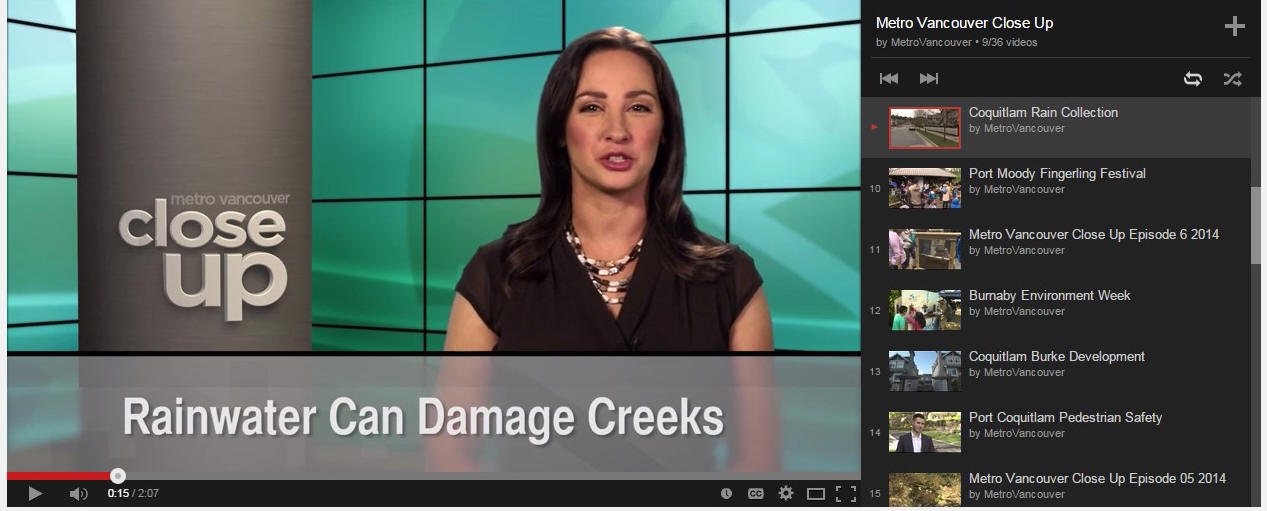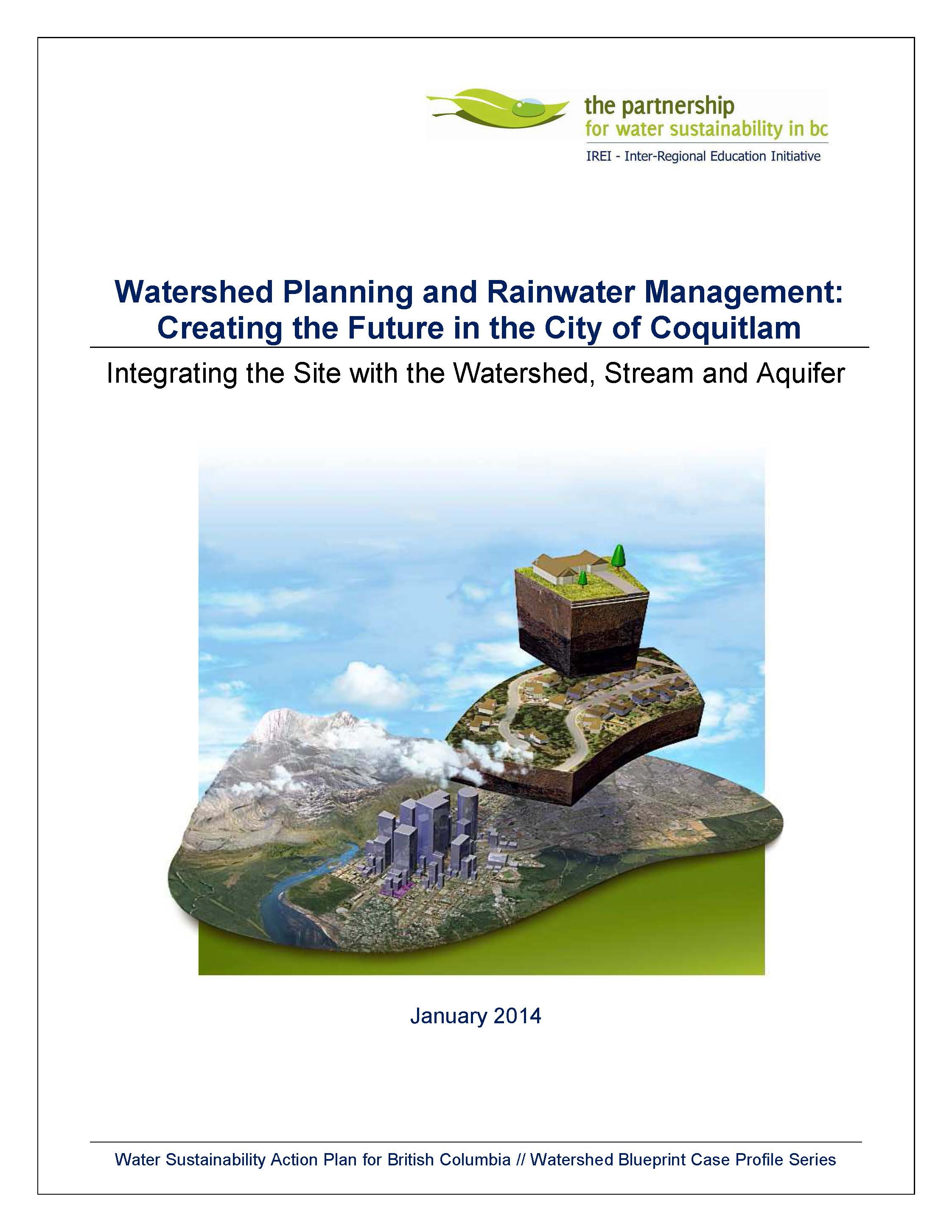Metro Vancouver Close Up (Video Series): Mimicking Nature is Key to Rainwater Collection in the City of Coquitlam
Note to Reader:
Metro Vancouver Close Up is a video series about local government and community sustainability initiatives which support regional goals. It is hosted by environmental leader Dagmar Timmer. The series profiles member municipalities and makes the connections between regional goals and aspirations and how these are implemented and enhanced at the local level.
To learn more about Metro Vancouver Close Up, click here to access the homepage.
Focus on Watershed Health
Mimicking nature is the big idea behind rainwater collection on Burke Mountain in the City of Coquitlam. To protect the health of streams, the design works to put water where it needs to go. To learn more about how a flexible design slows down the water to prevent stream damage, click here to view a 2-minute video.
 “One of the key elements of making a watershed work is addressing rainwater,” says Coquitlam Mayor Richard Stewart. “Allowing it to filter through the soils, allowing the proper biological processes rather than simply large catch basins and taking the water out by storm sewer.”
“One of the key elements of making a watershed work is addressing rainwater,” says Coquitlam Mayor Richard Stewart. “Allowing it to filter through the soils, allowing the proper biological processes rather than simply large catch basins and taking the water out by storm sewer.”
Under many new Burke Mountain roadways, large pipes direct some road runoff toward the Pitt River and DeBoville Slough (slew), which are both large enough to handle extra flows without erosion issues.
Mimic the Natural Hydrology
“We also don’t want to starve those creeks of water entirely,” says Melony Burton of Coquitlam’s Engineering department. “The diversion pipes have flow splitters which bleed off some of the flow back towards the creeks.  We have these water quality ponds which take that diverted flow. The sediment and the pollutants (attached to it) get settled out and the clean water is able to carry on to the creek.”
We have these water quality ponds which take that diverted flow. The sediment and the pollutants (attached to it) get settled out and the clean water is able to carry on to the creek.”
Rain is also directed to roadside rain gardens and underground trenches filled with rocks. A test in 2011 revealed that 90% of the rainwater soaked into the ground.
“The purpose is to really mimic the natural hydrology,” explains Burton. “Get it into the ground and then let it travel slowly and evenly back to the creeks, the way nature intended.”
Rain barrels and extra topsoil are also part of the city’s directives to developers, as ways to absorb and hold rain.
“We have had a unique opportunity up here with Burke Mountain being a greenfield development and having the space and also the foresight to act proactively,” says Burton. “Rather than reactively with our drainage and storm water and rainwater management.”
Richard Stewart envisions multiple benefits.
“By really focusing on the health of the watershed, I think we can end up with a much healthier environment and a better community.”
To Learn More:
Visit the Coquitlam rainwater management web page
To download a PDF copy of Coquitlam’s story, click on Watershed Planning & Rainwater Management: Creating the Future in the City of Coquitlam.



